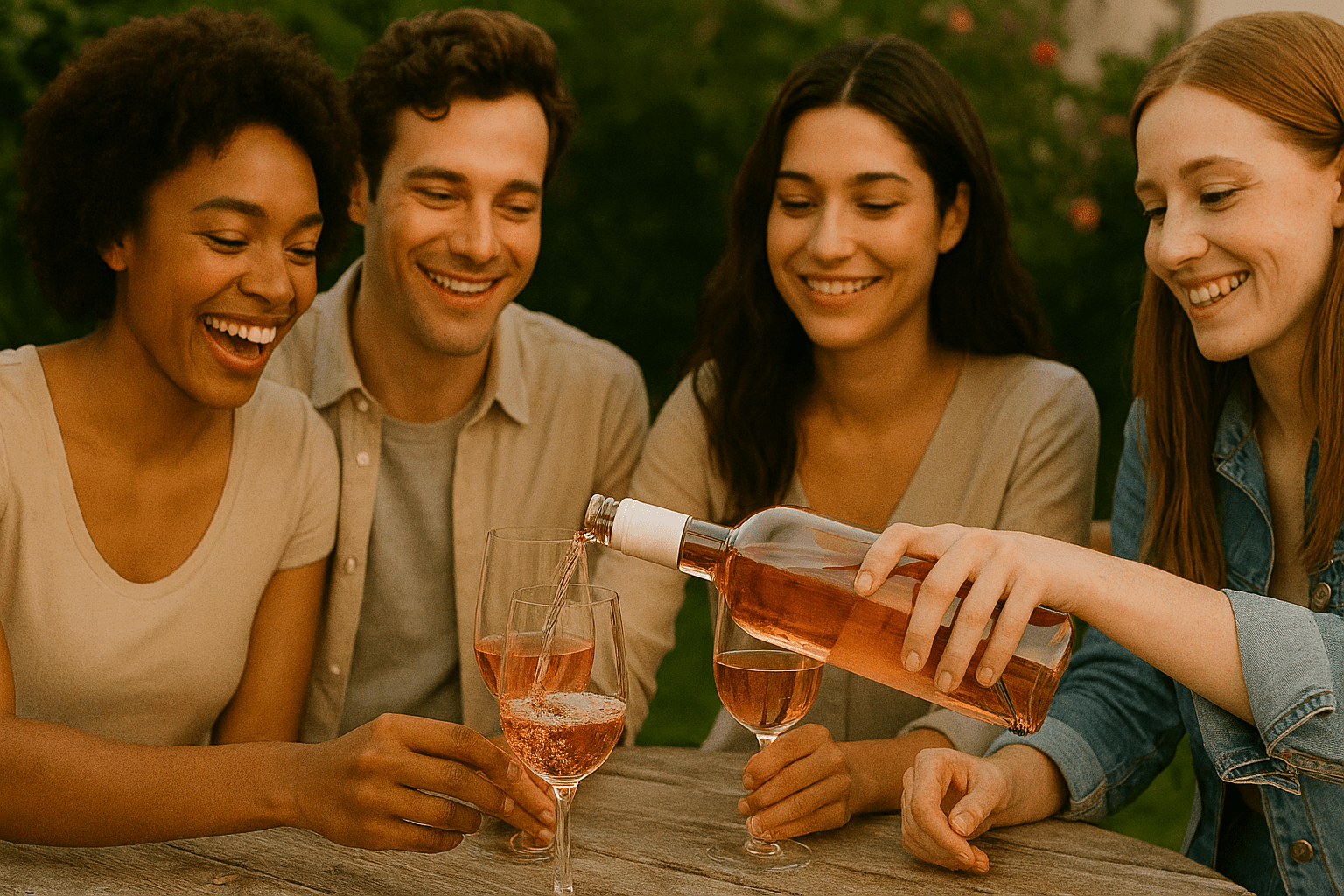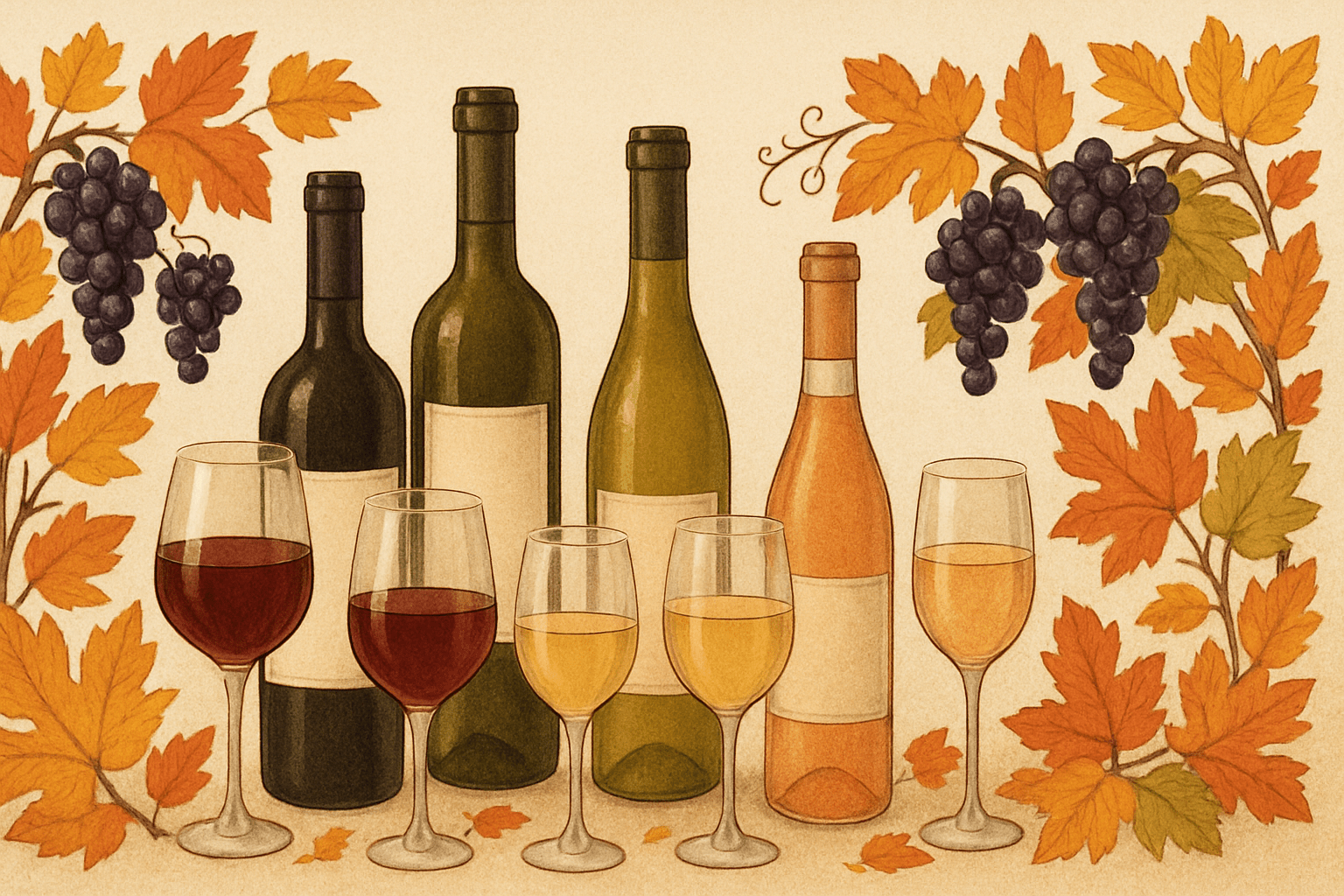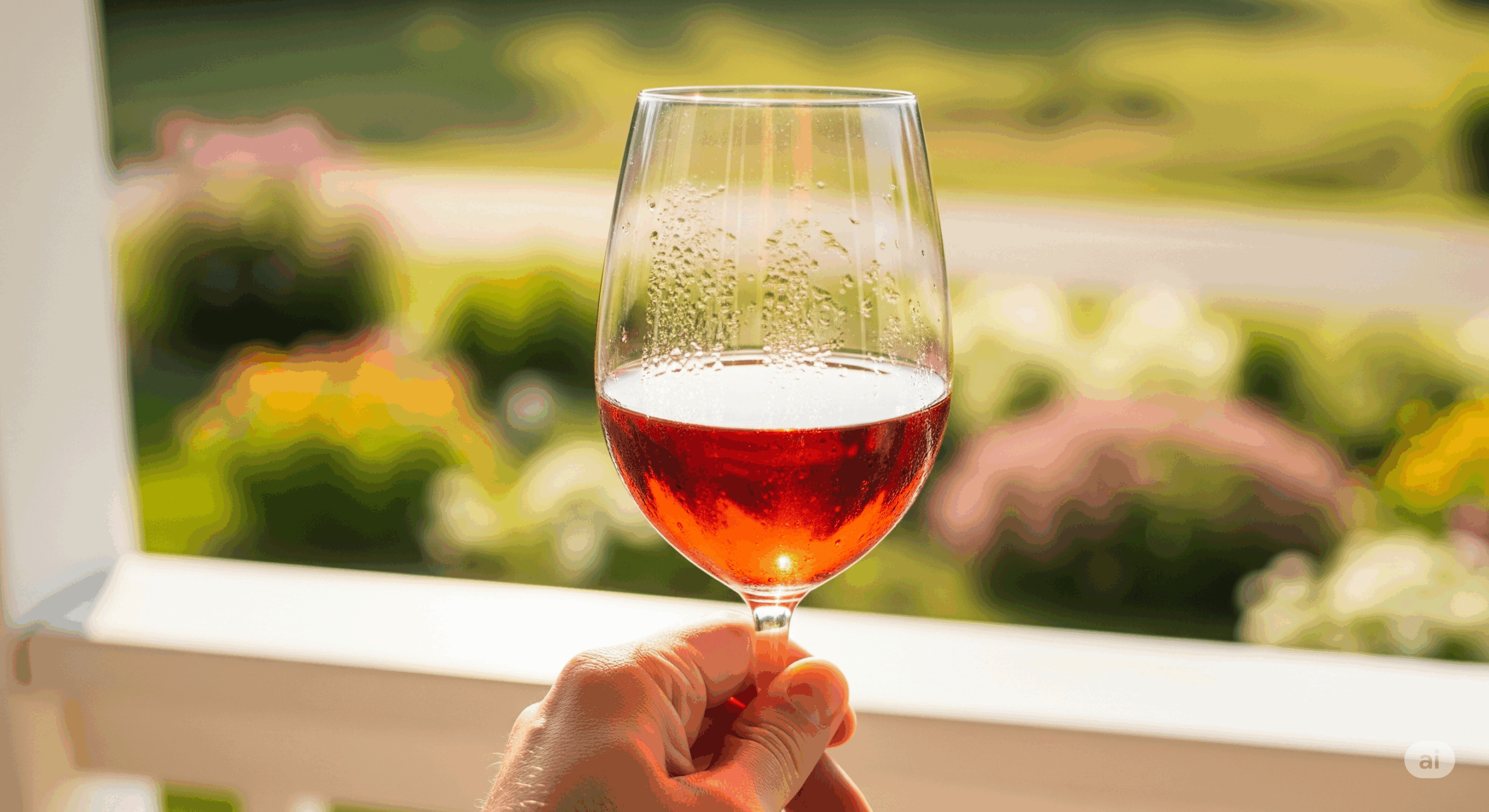Walk into any wine shop between May and September, and you’re met with a literal wall of pink. Bottles of rosé, from the palest onion-skin to the brightest magenta, crowd the shelves. It’s the official drink of summer, the symbol of carefree afternoons and relaxed evenings.
But this popularity has created a problem. With prices ranging from $10 to $50+ for wines that look almost identical, how do you know what’s actually worth buying? Are you paying for quality, or just for a fancy bottle shape and a celebrity endorsement?
You’re often paying a “pink tax”—a premium for the trendy image of rosé. But as a wine bounty hunter, you don’t have to fall for it. Here is your expert guide to navigating the sea of pink and finding fantastic rosé that always over-delivers for the price.
Rule #1: Look Beyond Provence
Provence, France is the spiritual home of the pale, dry, elegant style of rosé we all love. It’s the benchmark. Unfortunately, that fame means you are paying for the name. While there are some great values, the best deals are often found in the regions next door.
Your Value Hunting Grounds:
- Languedoc-Roussillon (France): This sun-drenched region sits just west of Provence. They use the same grapes (Grenache, Syrah, Cinsault) and have the same climate, but the wines are a fraction of the price. Look for “Pays d’Oc IGP” on the label for some of the best rosé deals on the planet.
- Loire Valley (France): For a more mineral-driven, elegant style, look for rosé from the Loire. Rosé from Sancerre (made from Pinot Noir) or Chinon (from Cabernet Franc) is crisp, stony, and sophisticated.
Rule #2: Don’t Fear the Darker Pink
Somewhere along the line, we were taught that only the palest rosé is good. This is completely false. A deeper pink color doesn’t mean the wine is sweet; it just means the grape skins spent a little more time in the juice, resulting in more color and often, more flavor!
Your Darker Pink Destinations:
- Spain (Rosado): Spanish “Rosado” is a food-pairing dream. Made from grapes like Garnacha and Tempranillo, they are dry, robust, and packed with zesty cherry and raspberry flavors. They are incredible with grilled chicken or burgers. Look for rosado from regions like Navarra or Rioja.
- Italy (Cerasuolo): The word “Cerasuolo” means “cherry red,” and that’s exactly what this wine looks and tastes like. Cerasuolo d’Abruzzo is a fantastic, savory, and food-friendly rosé that is a must-try for any adventurous wine drinker.
Rule #3: Always Check the Vintage
This is the simplest and most important rule. With very few exceptions, rosé is meant to be drunk as fresh as possible. Its charm lies in its vibrant, zesty fruit flavors, which fade over time. An old bottle of rosé will taste tired and flat.
Your Action Plan: When you are shopping in the summer of 2025, you should be buying the 2024 vintage. If you see a bottle from 2023 or, even worse, 2022, leave it on the shelf. The freshest bottle is always the best bounty.
Rule #4: Ignore the Bottle, Read the Label
Winemakers know that consumers buy rosé with their eyes. They use beautifully etched glass, fancy shapes, and elegant glass stoppers to make a bottle look expensive. Don’t be fooled.
A simple bottle with a screw cap tells you nothing about the quality of the wine inside—except that the producer may be spending more money on the juice than on the packaging. Ignore the marketing and read the important stuff: the region (see Rule #1 & #2) and the vintage (Rule #3).
With these four rules, you can confidently navigate any wine aisle and pick out a stunning rosé that drinks like a $30 bottle but costs less than $20. Happy hunting!
Did you like this content? If you did, let us know and share it with your friends.
This page contains affiliate links. We receive a small compensation when you purchase through affiliate links. While clicking these links won’t cost you a cent, it will help us keep the lights on and buy more wine. To find out more, click here.





